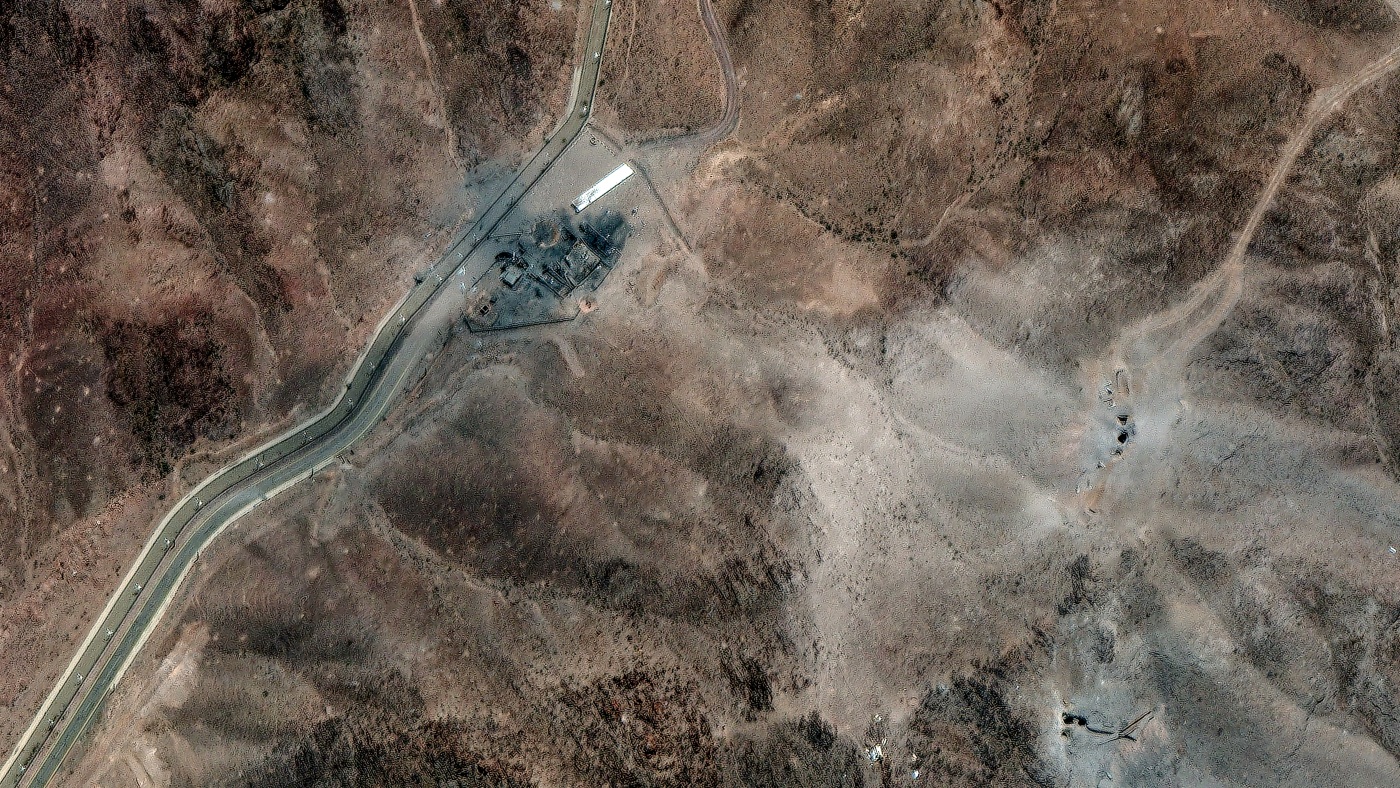News
Your air conditioner isn’t built for this heat. 5 tips can boost performance

An air conditioner undergoes repair earlier this month in Austin, Texas. Record-breaking temperatures continue across large swaths of the U.S.
Brandon Bell/Getty Images
hide caption
toggle caption
Brandon Bell/Getty Images

An air conditioner undergoes repair earlier this month in Austin, Texas. Record-breaking temperatures continue across large swaths of the U.S.
Brandon Bell/Getty Images
With much of the country in the grips of a massive heat wave, many people who have air conditioners in their homes are running them overtime.
But these extreme temperatures present a significant challenge to AC systems, which engineers and installers say are really only designed to keep indoor temperatures about 20 degrees cooler than outside.
With temperatures in many parts of the U.S. well in excess of 100 degrees Fahrenheit in recent days, that can pose a big problem, says Srinivas Garimella, a professor of mechanical engineering at Georgia Tech.

“Most new systems in the U.S. are designed for a 95 degree day. That’s a hot day, but we’re having more and more of those days,” he says.
Under these conditions, “your efficiency drops and you actually lose a little capacity, which means the unit is going to run non-stop,” according to James Barry, who owns Doctor Cool & Professor Heat, a company in League City, a suburb of Houston.
All air conditioners work the same
Garimella explains that all air conditioners work on the same basic principle — a cold, low-pressure refrigerant evaporates and absorbs heat from a room and then is compressed before condensing and releasing the heat by way of an outdoor heat exchanger. The refrigerant is then recycled in a closed loop.
He compares the energy required to do this to climbing a mountain. The hotter the indoor temperature, the more effort (and energy) needed to make the climb. “So, the higher the ambient temperature, the more the compressor has to work, the more electricity [is] needed, and the problem just keeps getting compounded,” he says.
Compressors work less efficiently at higher heat, which means they need more power to do the job. Higher humidity also places “a humongous additional load” on an air conditioning system, he says.
Simply installing a bigger air conditioner might sound like a solution to the problem. Not so, according to Reinhard Radermacher, a professor of mechanical engineering at the University of Maryland.
It may be fine on the hottest days, but “if 90% of the time [an air conditioner] is oversized,” it’s not efficient, he says.

Employees working on an air conditioner production line at a Midea factory in Guangzhou, in China’s southern Guangdong province, last July.
Jade Gao/AFP via Getty Images
hide caption
toggle caption
Jade Gao/AFP via Getty Images

Employees working on an air conditioner production line at a Midea factory in Guangzhou, in China’s southern Guangdong province, last July.
Jade Gao/AFP via Getty Images
Getting the most out of your air conditioner
Even so, there are some things you can do to maximize your air conditioner’s effectiveness even as it struggles to keep things cool.

Don’t fool with the thermostat. Set it at a desired, comfortable temperature — say, 72 degrees F — and leave it alone. “If you keep it at a low level just running all the time, it is far more efficient” than throttling the thermostat, according to Garimella.
Clean filters and the coils on the outdoor heat exchanger. Dirty filters impede air flow, and dusty coils make it harder for the heat exchanger to work efficiently. “A lot of people do not maintain their basic unit. If you can keep a real good clean outdoor coil, it definitely helps the air conditioner remove the heat,” Barry says.
Turn off heat-producing appliances. “During the hottest part of the day, turn off anything that produces heat such as stoves, dishwashers, lights, etc.,” according to Fritts, a heating and air conditioning company based in Georgia.
Run a ceiling fan. “The sensation of comfort comes from [both] the temperature of the air and the breeze that’s blowing at you.” A ceiling fan definitely helps, Garimella says.
Cool down at night and shade the windows. “Cool down the house at night as much as possible. And then when the sun comes up in the next morning, shade all windows [and] keep the windows and doors closed as much as possible,” according to Radermacher.

Beyond those basics, there are longer-term solutions, such as better insulation and using trees to shade a house, Radermacher says.
Also, variable-speed compressors, which are found only in more expensive ACs, work more efficiently than single-speed compressors, Garimella says.
Systems with variable-speed compressors “will only function at the capacity that is needed for the house. And that makes a very big difference in its efficiency and its capability to keep up with the load,” he says.
What about new air conditioning technologies? There’s “no silver bullet” on the horizon, Radermacher says. “There’s a bunch of new technologies under way, but they all have to follow the same dynamics” as current air conditioning systems, he says.
Meanwhile, in League City, a string of 100 degree or hotter days means Barry’s technicians are pulling 12-hour days trying to keep up with service calls. They do much of their work in attics, where he estimates temperatures are averaging 120 to 130 degrees most days.
Clients who purchased equipment from the company or have service contracts take priority. “Right now, with this extreme heat, we’re actually having to turn away calls,” he says.

News
Video: Who Loses in the Republican Policy Bill?

Congressional Republicans just passed President Trump’s sprawling domestic policy bill that extends and expands tax cuts and spending on defense and deportations, while slashing Medicaid, food benefits and clean energy initiatives. Margot Sanger-Katz, a health care policy reporter for The New York Times, gives an overview.
News
Client Challenge
A required part of this site couldn’t load. This may be due to a browser
extension, network issues, or browser settings. Please check your
connection, disable any ad blockers, or try using a different browser.
News
Pope Leo's scandal-plagued hometown sees a bright future in buying his childhood home

Pope Leo’s childhood home in Dolton, Ill., is up for auction later this month.
Raymond Boyd/Getty Images
hide caption
toggle caption
Raymond Boyd/Getty Images
The Chicago suburb where Pope Leo grew up plans to purchase his childhood home and turn it into a historic site.
The Board of Trustees of Dolton, Ill., voted unanimously on Tuesday to put an offer on the three-bedroom, three-bath brick house, which is up for auction later this month.
At the meeting — which was livestreamed online — Mayor Jason House called the purchase a “once-in-a-lifetime opportunity” for the village, which in recent years has been plagued by a series of scandals over alleged financial and political misconduct by its previous mayor.

“We can either seize this moment and move it forward, or we can let that moment go to an investor,” House said.
The May election of Pope Leo — the first American-born pope — has drawn national attention to Dolton, a village with an estimated population around 20,000 some 20 miles south of Chicago.
Leo — then known as Robert Prevost — grew up in the home on East 141st Place. His parents bought it new in 1949, paying a $42 monthly mortgage, according to member station WBEZ.
Prevost moved away for college and spent most of his career in Peru before rising through the Vatican ranks. His family sold the house in 1996, and ownership changed multiple times in the years since. Most recently, a local bought it as a flip property in 2024 and had been trying to sell it earlier this year — as the Roman Catholic Church was undergoing a seismic change in leadership.

According to WBEZ, the house was listed for $219,000 on May 5, just days after Pope Francis’ death and before the start of the papal conclave. But the listing was taken down by the time Leo emerged as the new pontiff.
Broker iCandy Realty and real estate auction firm Paramount Realty are offering it to the highest bidder by July 17, with a reserve price of $250,000 — the minimum the seller will accept. They say it was renovated in 2025, but remains a part of history.
“Pope Leo XIV’s journey from this humble neighborhood to the Vatican is a testament to faith, perseverance, and purpose,” its informational brochure reads. “Now, you have the rare chance to own a tangible piece of his inspiring legacy.”
Neither village authorities, the realtor or the auction firm involved have responded to NPR’s requests for comment about what Tuesday’s vote might mean for the property’s sale and future.
Some locals don’t see the house as a top priority
While the unanimous motion drew a smattering of applause in the room, not everyone is thrilled about this use of village funds.
Dolton has been plagued by financial and political scandals since well before the new pope put it on the map.
Its previous mayor, Tiffany Henyard, is the subject of multiple lawsuits and a federal investigation over alleged corruption, financial mismanagement and political retaliation during her four-year tenure.
Residents voted to recall her in 2022, but an appeals court later ruled that election invalid. In 2024, the Board of Trustees hired former Chicago Mayor Lori Lightfoot to investigate Henyard’s conduct.
Lightfoot shared the results in January, outlining a pattern of unchecked spending and deception by Henyard. One of her findings was that Dolton’s general fund balance had dropped from a surplus in 2022 to around $3.65 million in debt.
Henyard’s attorney accused Lightfoot of “political theater” in an effort to thwart her re-election campaign, which was unsuccessful. House beat her in the Democratic primary with 88% of the vote and was sworn in in May. And while Henyard’s legal troubles continue, House has pledged to get the village back on track.
His priorities include rebuilding trust between the local government and residents, as well as bringing new businesses to the area.
It’s against this backdrop that several concerned citizens came forward on Tuesday to question the house purchase, saying they would rather see an investment in basic infrastructure improvements, like fixing roads and filling potholes.

“We need to be mindful of addressing the issues that the city has while we’re trying to address the debts and the lawsuits,” the Rev. Ryan Reese said from the crowd. “I’m not sure that this is the first priority.”
Another resident, Mary Avent, said that while buying the house is “admirable,” she worries about whether the village can afford it.
“Even if we have the money, who’s going to maintain that?” she asked.
House said police and public works have been maintaining the property and will continue to do so.
“We’ve had charters come in here, we want to make sure that anybody that comes into our community is safe,” he said. “That’s a cost we will incur whether we own the property or not … Why would we not want to participate in that and get the benefit of this historic moment moving forward?”
House assured worried residents that the project will not derail from the board’s other priorities, adding that some roads would be repaved within days.
Officials hope history can fund the future
House said he wants the community to benefit from its history, and spoke of opportunities to get state and federal funds to do so. He stressed that attracting visitors would create much-needed revenue for the village, saying “you cannot cut your way out of a deficit.”
Several board members compared the pope’s house to the childhood homes of figures like Martin Luther King Jr. and Michael Jackson, and the tourism opportunities it could create. The Jackson home in Gary, Ind., is unoccupied and owned by the family, while the King family sold two of MLK’s Atlanta homes — where he was born, and where he later lived with his family — to the National Park Service within the last decade.

“When we do it the correct way, in the long run, it will pay for itself,” trustee Tammie Brown said, adding that she’s already heard from supporters of the idea who want to donate.
Since May, camera crews and Catholic tourists have traveled from across the country to visit and take pictures outside of the two-story house (although some mistakenly flocked to the wrong one), according to local media reports.
On Tuesday, the Village of Dolton posted photos to its Facebook page of workers repairing the building’s roof. It said the house continues to attract visitors, “bringing new energy and attention to our village.”
“This increased traffic represents a new day in Dolton — full of potential, progress, and promise,” it said.
-

 Health1 week ago
Health1 week agoHeart attack deaths have plummeted in US, but new cardiovascular threats emerge
-

 World1 week ago
World1 week agoVietnam ends death penalty for crimes against the state, bribery, drugs
-

 Lifestyle1 week ago
Lifestyle1 week ago6 new books out this week, including true stories of trailblazers
-

 Politics1 week ago
Politics1 week agoTrump slams Bibi over ceasefire violations, denounces cable channels over skepticism
-

 Politics1 week ago
Politics1 week agoWhite House drops 'Daddy's Home' meme after viral NATO summit moment
-

 News1 week ago
News1 week agoEarly intel assessment says Iran's nuclear program was only set back 'a few months'
-

 Health1 week ago
Health1 week agoLizzo Reveals the Diet Change That Helped Her Lose Weight Without Ozempic
-

 Business1 week ago
Business1 week agoIn-N-Out sues YouTuber over fake employee prank video


:focal(0x0:3000x2000)/static.texastribune.org/media/files/ef288fc4f76cb548d8e7a06f8d5653fc/Johnson%20Trump%20Bill%20Sign%20REUTERS.jpg)









